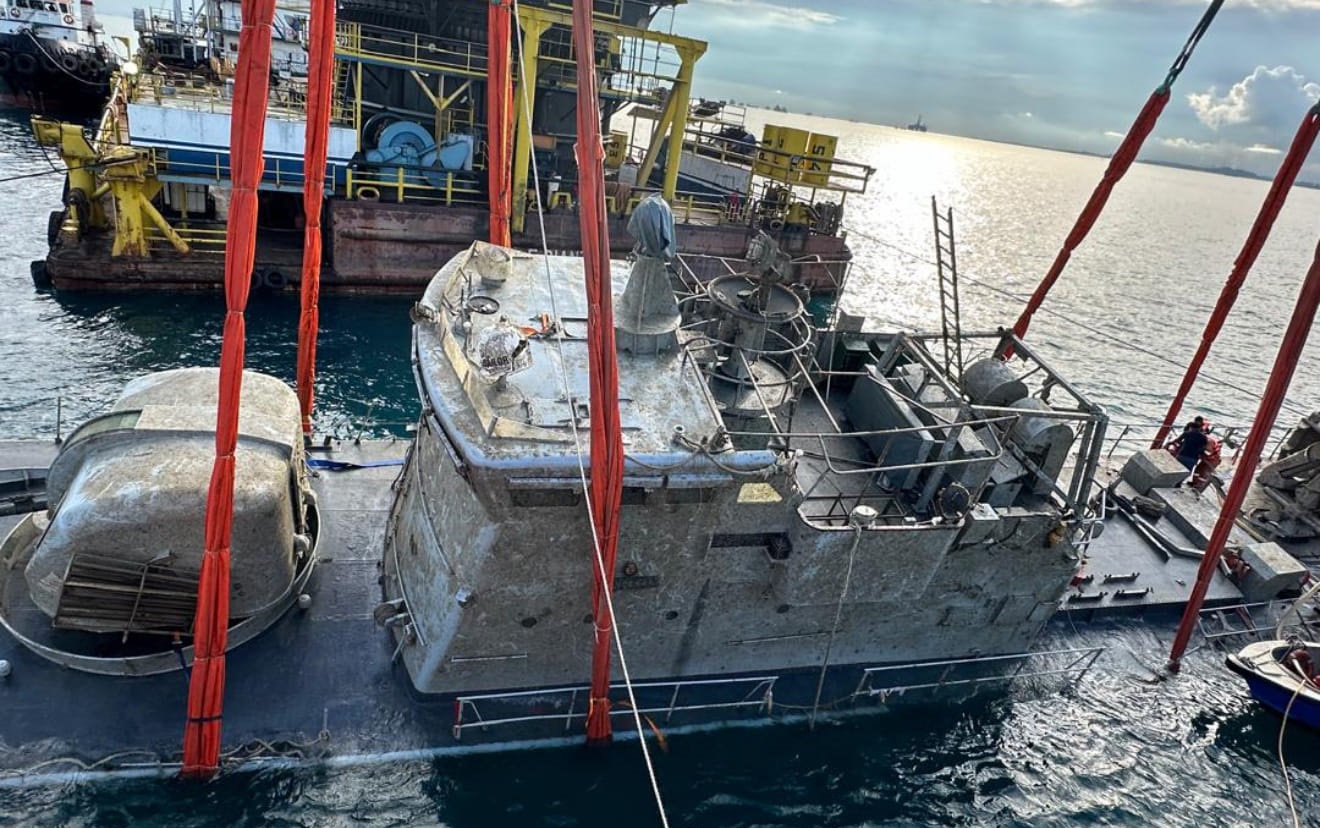The Royal Malaysian Navy (RMN) achieved a significant operational milestone on October 12, 2024, when the Handalan-class missile boat KD Pendekar (3511) was successfully refloated at 1638 hours. The vessel, which sank in August 2024, is now undergoing initial repairs before being returned to the RMN fleet. This success marks the culmination of a challenging salvage operation in the South China Sea. Pendekar was based in Tanjung Gelang, Kuantan, which is the RMN First Regional headquarters. After their rescue, the crew were transferred to the Tanjung Pengelih base. The last time RMN vessel suffered the same fate was another FAC – KD Pari – in late 2011. She took in water after one of her shafts became dislodged while underway. Her crew managed to get to Pulau Layang-Layang to be moored but due to the flooding, she sank at the jetty. She was salvaged in 2012 and later returned to service after undergoing repairs.
The recovery of KD Pendekar faced a number of obstacles, but these were overcome through the coordinated efforts of RMN and civilian contractors. The area where the ship sank, approximately two nautical miles southeast of Tanjung Penyusop, Johor, has been declared safe, with no remaining explosive threats to maritime traffic. This is a significant relief for local fishermen and maritime stakeholders who frequently navigate these waters. KD Pendekar sank after striking a submerged object on August 25, 2024. Fortunately, all 39 crew members were safely rescued. While the salvage mission has been deemed a success, the exact cause of the accident remains under investigation by an official board. The findings of this investigation will likely shape future operational safety measures for RMN vessels.

At 45 years old, KD Pendekar’s future will be decided as part of the RMN’s broader “Phasing In – Phasing Out” plan, a key component of the navy’s 15to5 Transformation Program. This initiative aims to streamline the fleet by decommissioning older vessels and replacing them with modern platforms better suited to contemporary naval operations. The RMN has proposed updating its fleet transformation programme in response to delays to existing procurements and shifts in operational requirements and budgets. Under the proposal, which is yet to be approved by the government, the RMN will push back some platform procurements and add mine-countermeasures vessels (MCMVs) and hydrographic survey vessels (HSVs) to the ’15-to-5′ fleet transformation plan that was launched in the mid-2010s. The revised plan outlines the acquisition of 29 vessels by 2040, down from 42 under the legacy plan. In total, the revised plan proposes 61 vessels for the RMN, up from 55 under the legacy plan.
The Handalan-class vessels are domestically modified versions of the Swedish Spica-M fast attack craft, a heavier variant of the Norrköping class. These ships, built by Kalskrona Varvet and commissioned in 1976, replaced the older Perkasa-class squadron. The Handalan-class boasts significant upgrades over its predecessors, including longer-range diesel engines, Exocet MM38 missile launchers, and advanced electronic warfare capabilities such as the Thales DR3000S electronic tracking system. Despite being smaller than some other RMN vessels, such as the Perdana-class missile boats, the Handalan-class ships are more heavily armed and better equipped for modern warfare. In 2020, the RMN confirmed plans to extend the operational lifespan of these vessels through upgrades, ensuring they remain a critical part of Malaysia’s naval defense strategy.















